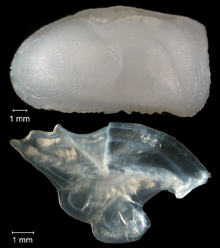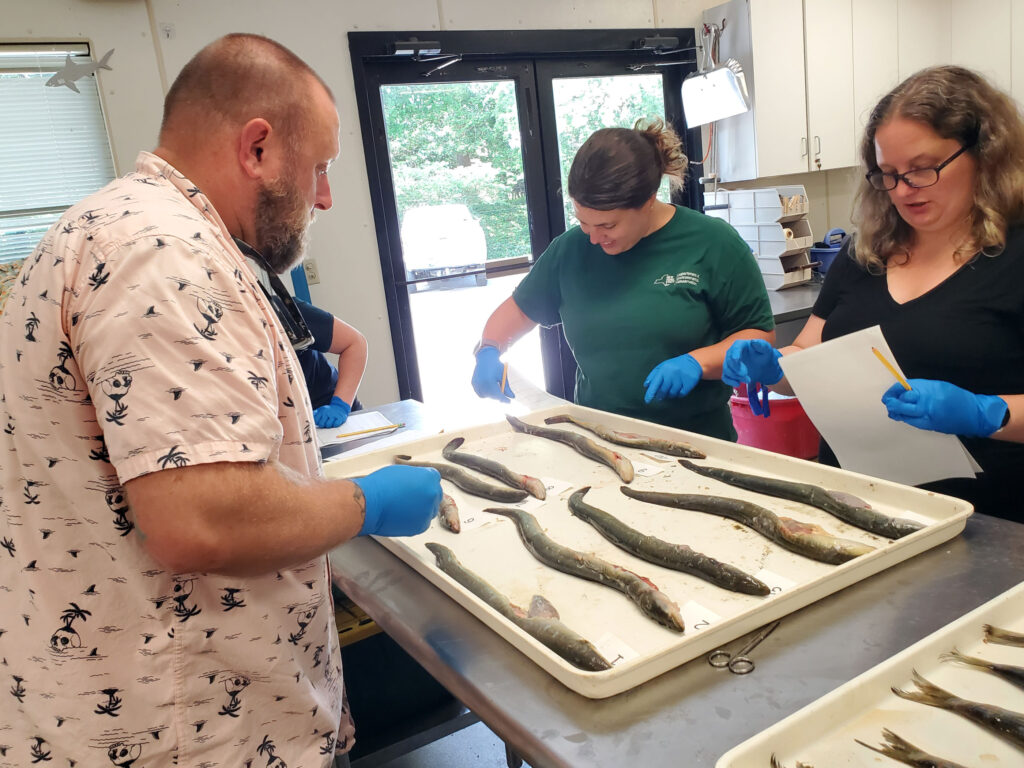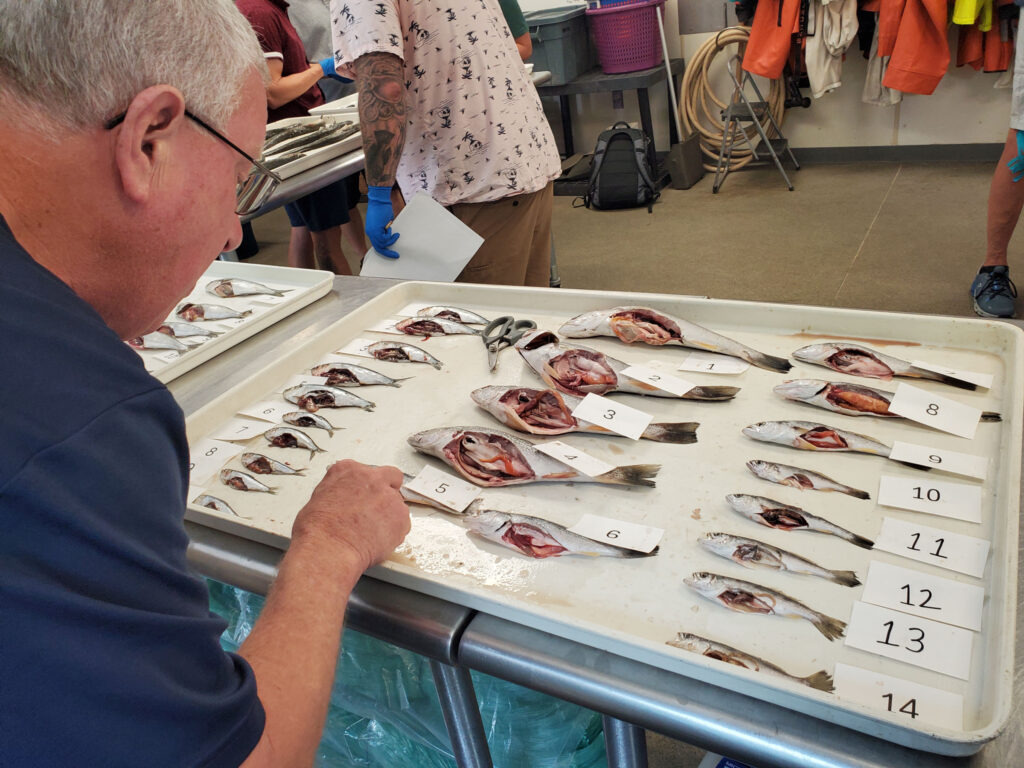Ageing Research
Delve into the science of fish ageing, where we explore how biologists determine the age of fish and the critical role this information plays in sustainable fisheries management. Ageing data helps outline a fish’s life history and is essential for developing age-structured assessment models and harvest strategies.

Contact
Samara Nehemiah, Ph.D., Stock Assessment Scientist (snehemiah@asmfc.org)

Understanding Fish Ageing
Fish ageing is a critical component of fisheries biology that provides insights into the life history of fish species, such as growth rates and maturity. Ageing data is essential for input into age-structured stock assessment models which help manage fish populations sustainably. Biologists determine a fish’s age by analyzing annual growth markings on various body parts, which reflect seasonal growth variations.
Common Ageing Structures
Fish biologists use several body parts for ageing, with the most common being scales, otoliths (ear bones), opercula (gill plates), spines, and vertebrae. These structures show alternating translucent and opaque bands similar to tree rings, which are counted to estimate age.
Implications of Age Data
Age information is foundational for understanding key aspects of fish life, such as growth speed, lifespan, and maturity. This data allows scientists to develop effective harvest strategies, ensuring that fishing activities do not exceed the rate at which fish populations can replenish. It also provides insights into the demographic structure of fish populations and assists in managing gear types to target specific ages of fish optimally.
Challenges in Collecting Age Data
Obtaining reliable age data is often challenging and costly. Ageing methods require validation through laboratory or tagging studies to confirm the annual nature of growth markings. Additionally, comprehensive sampling programs are necessary to cover the targeted fishery or stock adequately, requiring skilled scientists and proper facilities.

Fish Ageing Workshops and Quality Control
The Commission organizes workshops to standardize fish ageing techniques across different states, ensuring consistency and reliability in age data used for assessments. These workshops facilitate the exchange of samples and methodologies among ageing experts from various state agencies. The annual Fish Ageing Quality Assurance/Quality Control Workshop maintains consistent ageing practices for specific species across labs from Maine to Florida.
The Commission has conducted specific ageing workshops for species such as American shad, river herring, American eel, Atlantic croaker, red drum, Atlantic menhaden, Atlantic striped bass, black sea bass, bluefish, tautog, and winter flounder. These workshops review and compare ageing procedures, enhancing the precision and reliability of fish age data across the Atlantic coast.
This structured approach to documenting fish ageing practices highlights the integral role of accurate age data in the sustainable management of fish stocks and the collaborative efforts required to achieve consistency in fish stock assessments.
Related Documents and Resources
-
Sciaenids Management Board Meeting Presentations — October 2024
-
Report of the Quality Assurance/Quality Control Fish Ageing Workshop — 2024
-
Report of the Quality Assurance/Quality Control Fish Ageing Workshop — 2023
-
Summary of the 2020-2021 Tautog Ageing Sample Exchange
-
A Practical Handbook for Determining the Ages of Gulf of Mexico and Atlantic Coast Fishes
-
Report of the Quality Assurance/Quality Control Fish Ageing Workshop — 2019
-
Report of the Quality Assurance/Quality Control Fish Ageing Workshop — 2018
-
American Eel Ageing Report — 2017
-
Report of the Quality Assurance/Quality Control Fish Ageing Workshop — 2017
-
Report on the River Herring Data Collection Standardization Workshop
-
Report of the Quality Assurance/Quality Control Fish Ageing Workshop — 2016
-
Atlantic Menhaden Ageing Workshop Report — 2015
-
River Herring Ageing Workshop Report — 2014
-
Proceedings of the Black Sea Bass Ageing Workshop — 2013
-
Tautog Ageing Workshop Report — 2012
-
Proceedings from the Winter Flounder Ageing Workshop — 2012
-
Bluefish Ageing Workshop Report — 2011
-
Proceedings from the Atlantic Croaker and Red Drum Ageing Workshop — 2008
-
Testing the validity of Cating’s (1953) method for age determination of American shad using scales — 2005
-
Proceedings from the Atlantic Striped Bass Ageing Workshop — 2003
-
Proceedings of the Workshop on Aging and Sexing American Eel – December 2001
-
Report of the Juvenile Abundance Indices Workshop
Get Hooked on ASMFC News
Dive into the latest updates and catch all the important news by joining our newsletter mailing list. Stay in the loop with meeting agendas, fisheries management news, and more.